National Geographic Photographer Annie Griffiths on the Importance of Gender Equity

Annie comforts a mother whose newborn infant has just had surgery for a tumor spotted during a routine sonogram. In this story called Life Before Birth, Annie covered medical procedures and options for families during pregnancy. This surgery was successful and the tumor was benign. Photo courtesy of Annie Griffiths.
Annie Griffiths’ trailblazing career as one of the first female photographers in a male-dominated profession, is matched in impressiveness only by her incredible photography. When she noticed a need, she committed her career in photography to improving the lives of the people she documents. Annie spoke with us to share her story and give advice to emerging photographers looking to shatter the glass ceiling in their own ways.
You were one of the first women to work as a photographer for National Geographic. What challenges did you face when you first started out? How did you overcome them?
Early in your career you’re just focused on trying to support your habit, “How do i find a job that allows me to do this?” You get to a point where you achieve that first goal, and then you think, “How can I do something that makes a difference?”
With global poverty, I understood a lot, and I think wherever your heart lies is what you pursue. Once I began working as a photojournalist, I realized how male dominated the field was. Men would go out to capture images, but many cultures would not allow a man alone with women, so these male photographers were only capturing images of other men. Women’s stories were not being told.
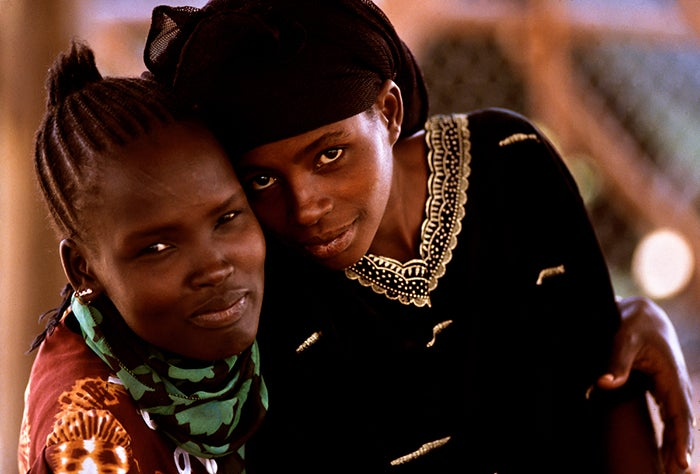
Although their tribes are often at odds, these two girls (one Sudanese and one Somali) have become best friends in the refugee camp where they both have lived for ten years. Photo by Annie Griffiths.

Burmese refugees find safety in a refugee camp in Thailand. Crucial to community happiness, the refugees have been encouraged to set up the camp as a traditional village, run by the residents. Photo by Annie Griffiths.
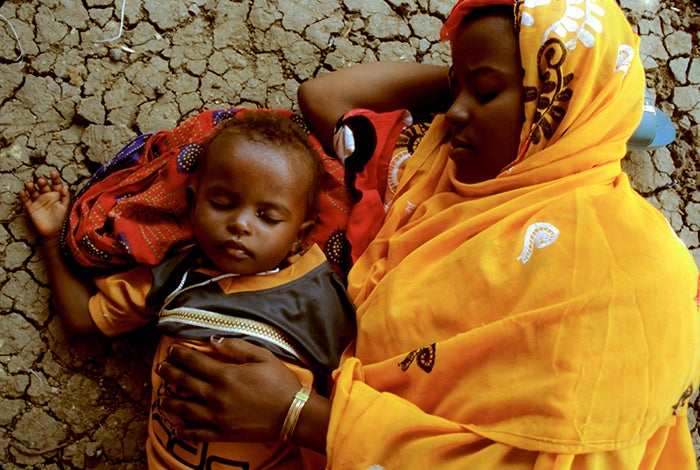
In Kenya, in one of the harshest refugee camps on earth, Annie met a young Somali woman named Marwah, with a very sick baby daughter. Two years later came the news that Marwah and her daughter had made it out of the camp. They are now living in northern New York and the baby, now 17 years old, is headed to college next year. Photo by Annie Griffiths.
How did the lack of female representation within photojournalism affect your journey as an artist?
Working in so many cultures where men and women were so separate, there were so many stories that went untold. In a world of male editors, male directors, male artists: there can be a lack of understanding of how women are being portrayed. No one is plotting to do this, it just happens because you don’t have the same perspective. That’s why it’s so important to have diversity in this field — we each see the world through a different lens because of our experiences, so we’re all going to focus on and capture a different story.
With me, that focus was traveling to places and speaking and engaging with women. Because for so many years they had been ignored. And when I got back to the states, I was lucky. Because I took these photos to my editor and I was heard. I never had to fight to get anyone to see things my way because the photography tells the story itself.
So often we only want to share things that are breaking news. But the big stories don’t break, they exist.
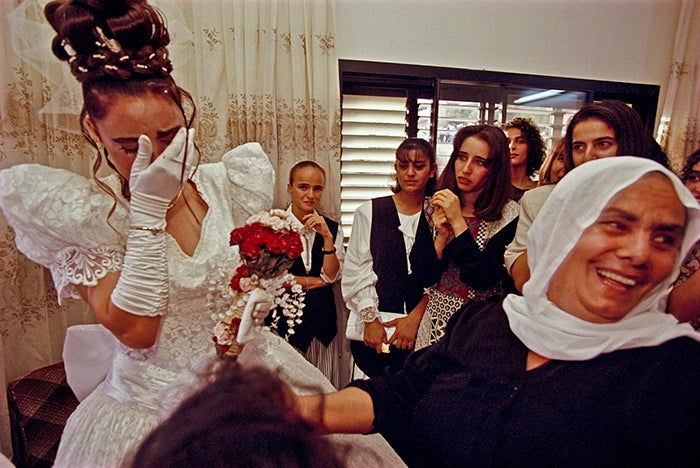
At a Druze wedding in northern Israel, a young bride shows respect for her parents by weeping at the thought of leaving them to become a wife. This tradition must take place even when the bride is happy about the marriage. Photo by Annie Griffiths.
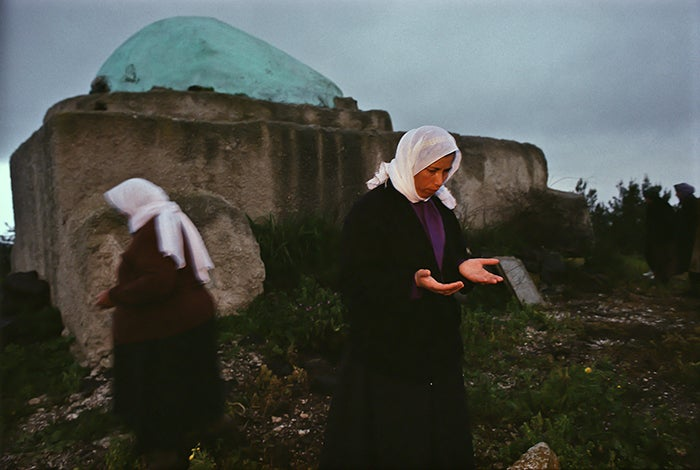
Before dawn, on the last day of Ramadan, Palestinian women pray at their local cemetery, honoring those who were lost during the previous year. Photo by Annie Griffiths.
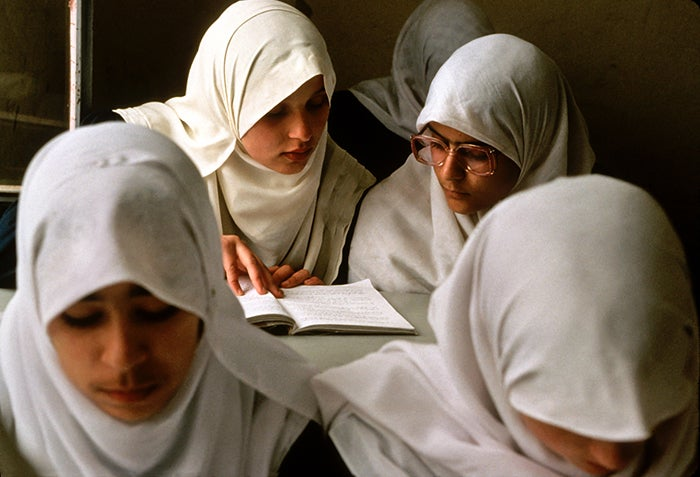
Palestinian girls study at a secondary school in the West Bank of Jerusalem. Photo by Annie Griffiths.
What advice would you give to emerging photographers looking to capture authentic stories?
There are stories everywhere, it’s not where you live. It’s how you see the world. It’s very easy to think, “If I go somewhere exotic I’ll find a great story.” But it just doesn’t work that way. What you’re trying to do is bring your own fresh perspective to the truth.
We need more artists to pick up a camera and focus their attention on showing others the reality they see. What one person thinks of as “normal” or obvious, someone else never considered. That’s what makes photography so powerful. Suddenly, we understand each other’s perspective.
Photography immediately transports you to reality. You’re not inside someone’s brain, you’re instantly seeing real things. Photography has the ability to speak truth, and my goal is always to elicit an emotional response.
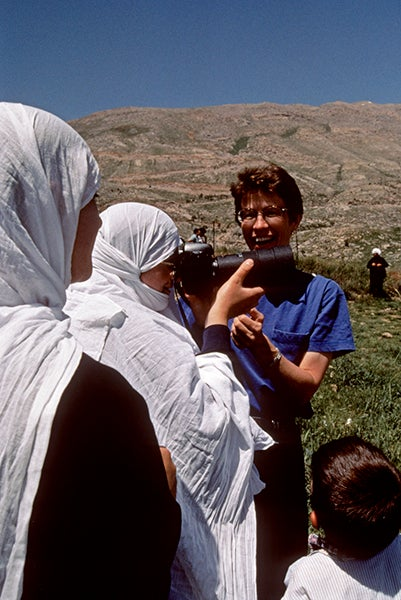
Annie shares her camera with Palestinian women at Shouting Mountain, a demilitarized zone where Arab women can shout greetings to their Syrian friends and family members on the other side of the border. Photo courtesy of Annie Griffiths.
The biggest misunderstanding is that someone starting out thinks they can/should be at the top. They think, “I want to be at NatGeo.” But you don’t start there. You hone your craft. You build the skills. You’re not constantly focused on the distant future. It’s great to have goals, but in between yourself and those goals, is a lot of hard work. Artists don’t always have that reality check. If you want to be Meryl Streep someday, you’ve got to go to an acting class. There’s no magic advice — work hard, and create work you can be honest and passionate about. For artists, there is no peak. Everything you create is important. Everything you create matters. Don’t look at your path as building up towards something. You’re doing it now. If you’re creating, you’re successful.
Learn more about Annie and how she uses photography to effect change, by watching her interview with Adobe Create Magazine.